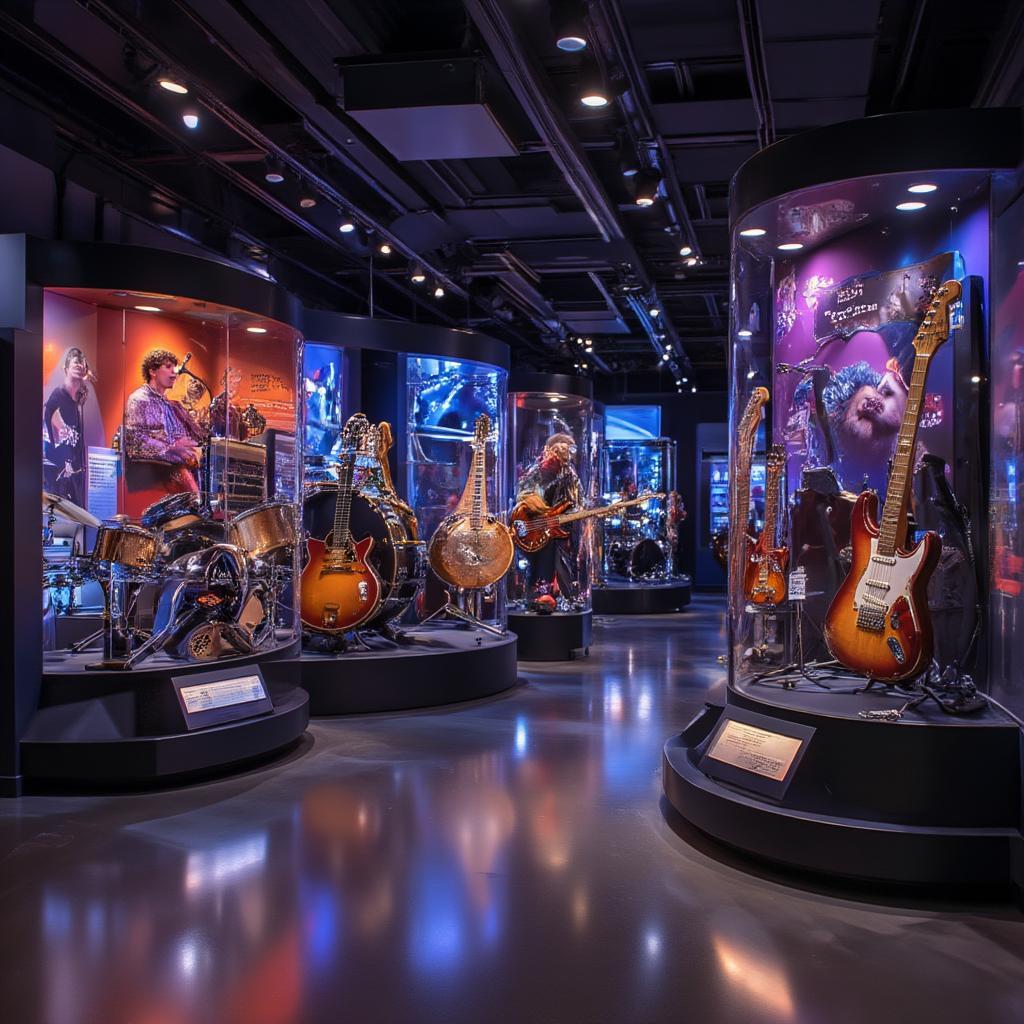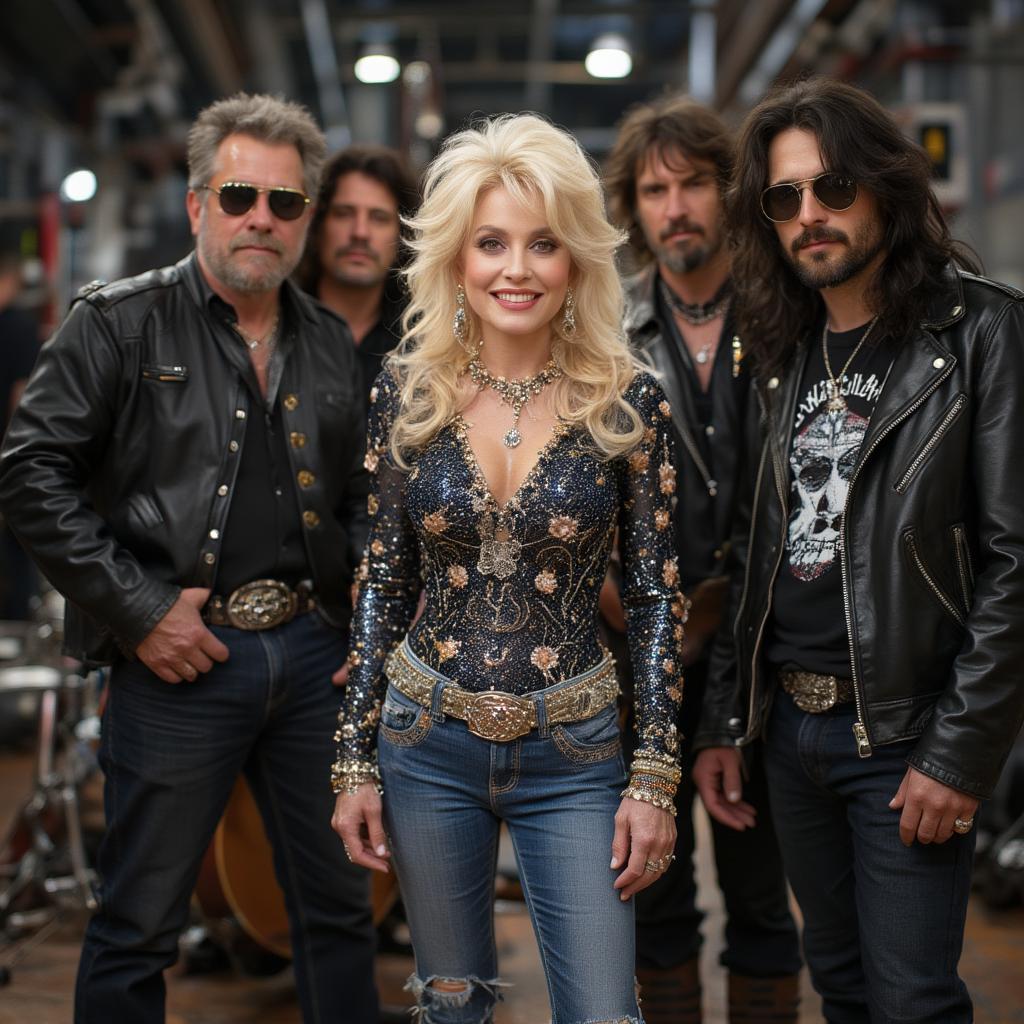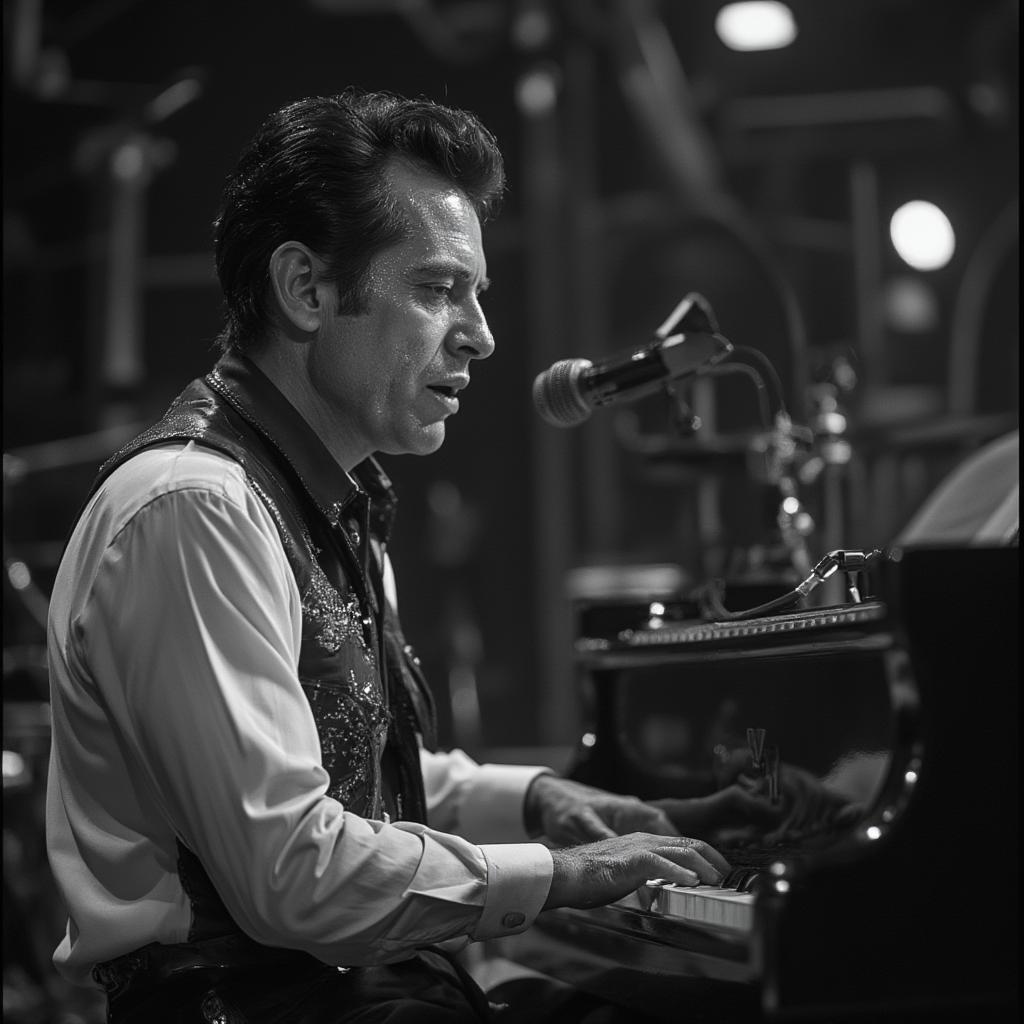Exploring the Raw Power of Rock n Roll Artists: From Legends to Modern Icons

Rock and roll, a genre born from rebellion and bursting with energy, has shaped the landscape of music for decades. It’s more than just a sound; it’s a cultural phenomenon, a spirit of defiance, and a celebration of freedom. Delving into the world of Rock N Roll Artists reveals a fascinating tapestry of innovation, passion, and unforgettable personalities. From the pioneers who laid the foundation to the modern-day torchbearers, let’s embark on a journey to understand the magic behind this iconic music.
What Defines a True Rock n Roll Artist?
What exactly separates a rock and roll artist from, say, a pop star or a blues musician? It’s a complex mix, but some key ingredients stand out. It’s not just about the technical skill—though that’s undoubtedly crucial—it’s about the raw emotion, the swagger, and the willingness to push boundaries. It’s about capturing the human experience, the highs and lows, and delivering it with untamed passion. You can feel it in the electrifying riffs, the powerful vocals, and the attitude that oozes from every performance.
The Building Blocks of Rock n Roll
Think about the foundational elements: driving rhythms, catchy melodies, and often, lyrics that speak to the everyday struggles and dreams of the audience. Early rock n roll artists blended blues, gospel, and country to create something entirely new, a sound that resonated with the youth of the 1950s and beyond. It’s about more than just playing the notes; it’s about the energy, the attitude, the feel of the music.
Iconic Rock n Roll Artists Who Shaped the Genre
The history of rock and roll is paved with the names of legends, each contributing their unique style and flair to the genre. These are the artists whose impact is still felt today, from their groundbreaking recordings to their unforgettable stage presence.
- The Pioneers: Chuck Berry’s duckwalk, Elvis Presley’s hips, Little Richard’s manic energy, these artists were true rebels, shaking the establishment and creating a sound that captivated a generation. They took the rhythms of the blues and gospel, added a dash of country, and turned up the volume, birthing a sound that was infectious and exciting.
- Chuck Berry, for instance, crafted guitar riffs that are still recognized and celebrated today, while Elvis Presley transformed the way music was presented with his captivating stage persona.
- The British Invasion: The Beatles, The Rolling Stones, and The Who, these British bands took American rock and roll, put their own spin on it, and brought it back with a vengeance. The raw power of early rock was now infused with catchy melodies, creative songwriting, and a new level of sophistication. Consider that, as a young rocker I’d often hear how “1950 rock and roll artists” laid down the blueprint for the British bands that came later.
- The Hard Rock and Metal Revolution: Led Zeppelin, Black Sabbath, and AC/DC turned the volume way up, adding a heavier, more aggressive edge to rock and roll. They showed that rock could be both powerful and technically brilliant, pushing the boundaries of guitar playing and stage performance. This era showcased the evolution of the genre, proving that it was far from static.
- As renowned rock historian, Dr. Eleanor Vance puts it, “The development from the bluesy roots of rock n’ roll into the complex and powerful sounds of hard rock and metal illustrates the enduring creativity and evolution within the genre.”
- The Punk Rock Uprising: The Ramones, The Sex Pistols, and The Clash stripped away the excess and delivered a raw, rebellious, and often confrontational sound that spoke to a new generation of disaffected youth. This movement proved that rock and roll was still capable of evolving and pushing boundaries.
How do these artists continue to inspire today?
Their music is more than just a collection of songs. It’s a feeling, an attitude, a statement. It’s about expressing yourself without holding back. This spirit of rebellion and self-expression continues to resonate with artists today, proving that rock and roll’s impact is everlasting.
Modern Rock n Roll Artists Keeping the Flame Alive
While the legends laid the foundation, the spirit of rock and roll continues to burn bright in contemporary music. The landscape may be different, but the core values remain. Bands and artists are taking the raw energy of rock and blending it with influences from other genres, pushing the boundaries of the music while staying true to its rebellious heart. We see it in the intensity of garage rock revivalists, the introspective lyrics of alternative rock bands, and the experimental approaches of indie rockers.
What Qualities Make These Artists Stand Out?
- Originality: These artists aren’t just copying the sounds of the past. They are innovating, experimenting, and creating their own unique voice within the framework of rock and roll. It’s about honoring the legacy while finding your own path.
- Authenticity: The best contemporary rock and roll artists are genuine. They are not afraid to express their true selves, even if it’s not always polished or palatable to everyone. They wear their hearts on their sleeves, channeling their emotions into powerful performances.
- Passion: The music is delivered with a level of passion and intensity that is palpable. It’s not just a job; it’s a calling. It’s that fire, that drive to create something powerful and impactful that makes rock and roll so potent and timeless.

The Enduring Legacy of Rock n Roll
Rock and roll is more than a genre; it’s a cultural phenomenon that has shaped generations. The genre continues to evolve and change, yet its core values—rebellion, self-expression, and a raw, untamed energy—remain unchanged. The music is a powerful force, capable of uniting people, sparking conversations, and pushing the boundaries of what’s possible. The legacy of the rock n roll artists, from the pioneers to today’s innovators, is that they’ve proven how powerful music can be, and that’s why they’ll never truly fade away.
It’s fascinating to witness how the evolution of the sound in “1960s rock and roll artists” continues to influence the music of today.
Why does rock n roll still matter today?
- It’s a form of expression: It gives a voice to the voiceless, allowing people to explore emotions, experiences, and ideas that are often suppressed in other settings.
- It’s a force of rebellion: It challenges the status quo, pushes boundaries, and encourages people to question the world around them.
- It’s a source of inspiration: It fuels the creative spirit, motivating people to pursue their dreams and express themselves authentically.
The Future of Rock n Roll
While some may claim rock and roll is dead, it’s more accurate to say that it is constantly evolving. The future of rock n roll lies in the hands of those who aren’t afraid to experiment, to take risks, and to stay true to the spirit of the music. It’s about honoring the legacy of the past while blazing a new path for the future. I believe that the genre will always have a place as long as there are people who yearn for honest music with substance.
As rock music critic, James Blackwood, puts it, “Rock and roll, in its essence, is about change and rebellion. Therefore, its future lies in continuing to adapt and evolve.”
What can we expect from the next generation of rock n roll artists?
- Genre Blending: Expect to see more blending with other genres, such as electronic, hip-hop, and even folk, creating unique and hybrid styles.
- Technological Innovation: Artists will continue to push the boundaries of sound with new technologies, experimenting with digital tools and unique recording techniques.
- Global Influences: Rock and roll will continue to draw from global cultures, incorporating new rhythms, melodies, and perspectives into the mix.

Rock and roll will live on, in different forms, but with the same driving spirit. Bands and solo artists such as “blondie rock and roll hall of fame” and “bee gees rock and roll hall of fame” continue to be inducted to the Hall, showing how wide-ranging the genre is, and their lasting effect.
Conclusion
The world of rock n roll artists is a captivating one. It’s a story of innovation, rebellion, and the enduring power of music. From the pioneers who laid the foundation to the contemporary artists keeping the spirit alive, rock and roll has consistently pushed boundaries and shaped the cultural landscape. It’s a genre that is built upon the raw, untamed expression of human emotion, a constant driving force in music, and a reminder of the importance of authenticity. As long as people are drawn to the power of music, the impact of these artists will continue to be felt for generations to come, inspiring countless others to pick up an instrument and play their hearts out.
Frequently Asked Questions About Rock n Roll Artists
1. What are the defining characteristics of rock n roll music?
Rock and roll typically features a strong backbeat, electric guitars, bass, drums, and vocals that range from soulful to aggressive. It is also characterized by its rebellious spirit and energetic performances. The blending of blues, gospel, and country influences helped to forge the sound that is still recognizable today.
2. Who are some of the most influential rock n roll artists of all time?
Some of the most influential artists include Chuck Berry, Elvis Presley, Little Richard, The Beatles, The Rolling Stones, Led Zeppelin, and Jimi Hendrix, each contributing a unique sound and style that helped to shape the genre’s trajectory.
3. How has rock and roll evolved over the decades?
Rock and roll has evolved from its blues and country roots into subgenres such as hard rock, punk rock, metal, alternative, and indie rock. Each of these subgenres has added its own distinctive sounds and styles, reflecting the changing times and cultural influences.
4. What role do live performances play in the rock n roll experience?
Live performances are central to the rock n roll experience, as they allow artists to connect with their audiences and showcase their passion and energy. The stage presence and improvisation are important aspects that differentiate the genre from other musical forms.
5. Are there any female rock n roll artists who have had a major impact on the genre?
Absolutely. Artists like Sister Rosetta Tharpe, Janis Joplin, Joan Jett, and Patti Smith have not only broken barriers but have also greatly influenced rock and roll through their talent, individuality, and powerful performances.
6. What distinguishes contemporary rock artists from those of the past?
Contemporary artists often blend various genres, use advanced technology, and incorporate more global and diverse influences. They still keep true to the rebellious spirit, while finding their unique path, building upon the legacy.
7. Where can I explore the history of rock and roll further?
The Rock and Roll Hall of Fame is a great resource. Also, numerous documentaries, books, and online archives offer a wealth of information on the history, evolution, and impact of the genre.




